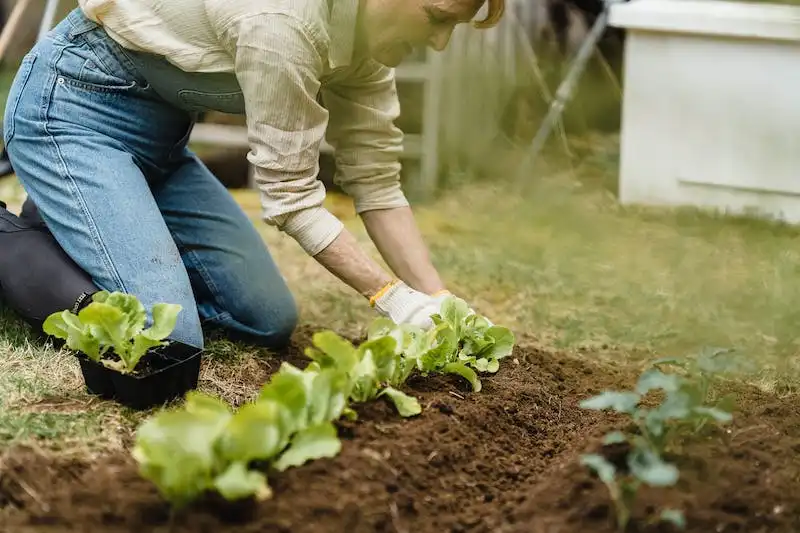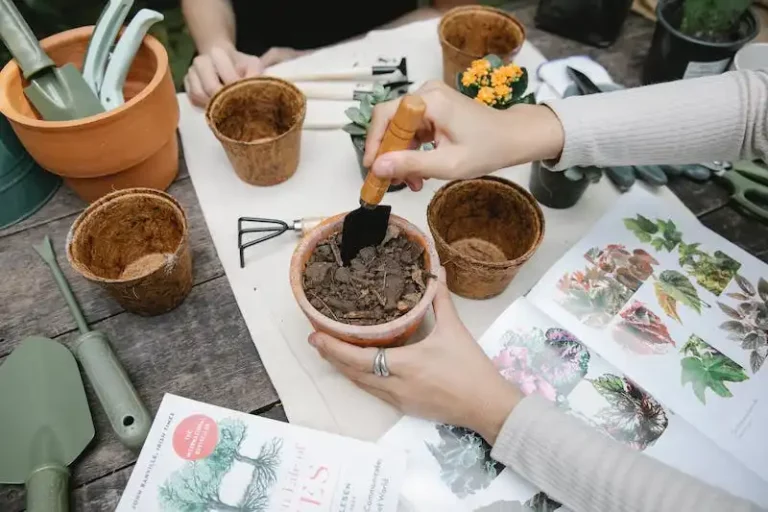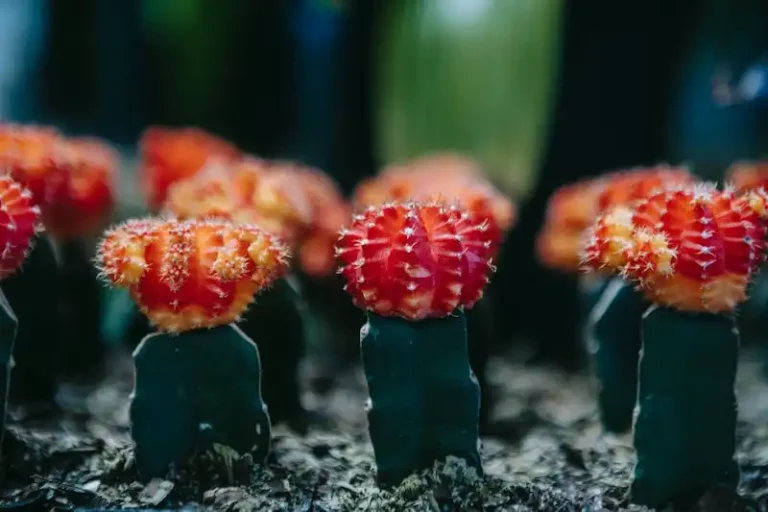If you have decided to grow your own mint plants, here is some information you might find useful. Many people love to grow mints in their gardens because they are considered easy to grow and they have a strong aroma and flavor. However, they can also be quite invasive and take over your garden if not properly contained.
One great way to propagate mint plants is by taking cuttings. This is a simple and effective method that allows you to produce new plants from the original ones. To propagate mint from cuttings, you will need a few supplies: a sharp pair of shears or scissors, a small container filled with water, and a small potting soil mix.
To start, find a healthy mint plant with plenty of stems and leaves. Using your shears, cut a stem from the mint plant just below a leaf node. Make sure to remove any leaves from the lower part of the stem, as these will be planted in the soil. You can also use a small amount of rooting hormone to promote root growth, but this is not necessary.
Next, fill a small container with water and place the cut stem into the water so that the bottom of the stem is submerged. You may need to use a weight, such as a rock or a small lip balm container, to hold the stem in place. Make sure that at least one leaf node is submerged in the water and that the stem is not completely submerged.
Now, place the container in a location with bright, indirect light and let the stem sit in the water for a few weeks. During this time, roots will begin to grow from the submerged leaf nodes. You can check for roots by gently tugging on the stem; if you feel resistance, the roots have begun to form.
Once the roots are about an inch or two long, it is time to plant the cutting in potting soil. Fill a small pot with potting soil and make a small hole in the center. Gently remove the cutting from the water and place it in the hole, making sure that the roots are completely covered with soil. Press the soil down gently to secure the cutting in place.
Water the newly planted cutting thoroughly and place it in a location with bright, indirect light. Keep the soil moist, but not waterlogged, as the cutting establishes itself in its new pot. Within a few weeks, you should start to see new growth from the cutting, indicating that it has successfully rooted and is growing.
Once the cutting has established roots and is growing well, you can transplant it into a larger pot or into your garden. Mint plants are very hardy and can tolerate a wide range of conditions, but they prefer rich, moist soil and full sun or partial shade. They can also withstand some drought, but it’s important to keep them well watered, especially during hot, dry weather.
In conclusion, propagating mint from cuttings is a simple and effective way to grow new mint plants. By following these steps, you can easily produce new plants from your existing ones, ensuring that your garden is always filled with fresh mint. So why not give it a try today?
Source: “How To Propagate Mint From Cuttings”, gardening.com
Mint propagation overwintering more
In this article, we’ll talk about how to propagate mint from cuttings and some tips for overwintering your mint plants. Mint is a popular herb known for its refreshing scent and various uses in cooking and drinks. It is relatively easy to propagate mint from cuttings, making it a great option for beginners or anyone looking to expand their herb garden.
To propagate mint from cuttings, start by taking a sharp, clean pair of scissors or a knife and cut a 4-6 inch stem from an established mint plant. Make sure to take the cutting from a healthy stem with no signs of damage or disease. Please be advised that some varieties of mint are toxic to cats, dogs, or other animals, so be cautious when handling them.
Once you have taken your mint cutting, remove the lower leaves, leaving only a few leaves at the top. This will help the cutting conserve energy and prevent wilting. You can also dip the end of the stem in rooting hormone to increase the chances of successful propagation.
Next, prepare a small pot or container with well-lit and well-drained soil. Moisten the soil and make a small hole using your finger or a pencil. Carefully place the mint cutting into the hole and gently firm the soil around it. Water the cutting thoroughly and keep the soil moist until roots begin to form.
To overwinter your mint plants, you can either keep them in containers indoors or plant them in a prepared bed in your garden. If you choose to keep them in containers, place them in a cool, well-lit area away from direct sunlight. Water the plants sparingly and do not fertilize during the winter months. If you decide to plant them in the garden, make sure to cover the plants with a layer of mulch to protect them from frost and cold temperatures.
It’s worth noting that mint plants can be quite invasive, so it’s a good idea to plant them in containers or restrict their growth using barriers in the garden. If you want to grow different varieties of mint, make sure to keep them separated to prevent cross-pollination. Mint can also be added to permaculture gardens as a beneficial companion plant for vegetables.
In conclusion, propagating mint from cuttings is a simple and rewarding process. By following the steps outlined in this article, you’ll be on your way to growing your own mint plants in no time. Remember to subscribe to our newsletter for more gardening tips and tricks, and feel free to share this guide with anyone who might be interested in growing their own mint!
Mint origin and characteristics
Mint is a popular herb that is commonly used in cooking and herbal remedies. There are many varieties of mint, but the one most commonly grown is spearmint (Mentha spicata). Mint is a member of the Lamiaceae family and is native to Europe and Asia. It is a hardy perennial plant that grows well in a wide range of climates and soil types.
Mint is a fast-growing herb that spreads easily and can become invasive if not properly managed. It has a square stem and leaves that are typically bright green and slightly fuzzy. The leaves of the mint plant are the most prized part, as they are packed with aromatic oils that give mint its distinctive flavor and scent.
When propagating mint from cuttings, it is important to use a well-draining potting soil. Mint prefers moist but not waterlogged soil, so a mix of potting soil and perlite or sand is ideal. Mint can be propagated from stem cuttings, which means taking a cutting from an existing plant and placing it in water or soil until it roots and begins to grow.
To take a cutting, use a sharp pair of shears to cut a stem from a healthy mint plant, making sure to include at least 3-4 sets of leaves. Remove the lower leaves from the stem, leaving only a few sets at the top. This will help promote root growth.
Here are the steps to propagate mint from cuttings:
- Fill a vase or jar with water and place the mint cutting in it. Make sure that the leaves aren’t touching the water, as this can cause them to rot.
- Place the vase or jar in a warm, sunny location. Mint requires at least 6 hours of direct sunlight each day to grow properly.
- Change the water every few days to keep it clean and free from mold or bacteria.
- After a few weeks, you’ll start to see roots forming on the stem. Once the roots are about 1-2 inches long, you can transplant the mint into a pot filled with potting soil.
Mint is a fast-growing herb and will quickly fill out the pot with lush green foliage. It is a great addition to any herb garden or container garden and can be used in a variety of culinary dishes, teas, and cocktails.
In addition to its culinary uses, mint also has a number of health benefits. It is known for its soothing properties and can help relieve digestive issues and freshen breath. Mint is also a natural insect repellent, making it a great addition to gardens to ward off pests.
Overall, mint is a versatile and easy-to-grow herb that is perfect for both beginner and experienced gardeners. Whether you’re looking to add flavor to your meals or create a fragrant garden, mint is a great choice.
Overwintering mint
In the context of propagating mint from cuttings, overwintering mint is an important topic to consider. Mint plants are typically grown as annuals, meaning they will die back at the end of the growing season. However, with proper care and preparation, it is possible to overwinter mint plants and enjoy fresh mint year after year.
One method of overwintering mint is to bring the plants indoors before the first frost. Mint plants can be easily propagated by taking cuttings, and these cuttings can be potted up and brought indoors. Place the cuttings in a well-lit area, such as near a window or under a grow light, and water them regularly to keep the soil moist.
Another option for overwintering mint is to plant it in a container that can be moved indoors. Mint can be grown in pots or even in a gardening vase filled with water. Simply take stem cuttings and place them in the container, making sure the stems are submerged in water or planted in moist soil. Keep the container in a well-lit area and water as needed.
If you prefer to leave your mint plants in the garden over winter, there are a few steps you can take to protect them from the cold. Start by preparing the mint plants for winter by cutting them back to about 4-6 inches above the ground. This will help to protect the plants from frost damage. Next, apply a layer of mulch around the plants to help insulate the soil and keep it from freezing. Use a thick layer of mulch, such as straw or leaves, to provide adequate protection.
It’s important to note that some mint varieties are hardier than others and may be more likely to survive the winter. Spearmint and peppermint, for example, are known to be more cold-tolerant than other varieties. If you’re unsure about the hardiness of your mint plant, it’s best to err on the side of caution and take steps to protect it.
Overall, overwintering mint plants can be a rewarding endeavor that allows you to enjoy fresh mint year after year. Whether you choose to bring your mint plants indoors, plant them in a container, or leave them in the garden, taking steps to protect and care for them during the winter months will increase their chances of survival.
Propagation
Mint can be easily propagated from cuttings. You can start by taking several stems from a healthy, established mint plant. Remove leaves from the lower portion of the stems, leaving only a few at the top. You’ll want to make sure the stems are long enough so that they can be submerged in water or potting soil.
If you choose to use water, fill a glass or other container with water and place the stems in it, making sure that at least one node is submerged. Within a few weeks, you should see roots beginning to form. Once the roots are about an inch long, you can transplant the cuttings to individual pots or containers filled with potting soil.
If you prefer to skip the water-rooting method, you can also directly plant the cuttings in potting soil. Prepare the potting soil by mixing it with perlite or sand to improve drainage. Dig a small hole in the soil, place the cutting in the hole, and gently pat the soil around it.
It’s important to provide plenty of water for the newly rooted cuttings. Make sure the soil stays moist, but not waterlogged. Mint can be grown in both outdoor gardens and indoor containers, so choose a location that suits your gardening preferences and available space. You may also want to subscribe to a gardening guide or consult a gardening expert for more specific care instructions.
Remember to protect your mint plants from pests and diseases. Mint can be susceptible to mint rust and aphid infestations, so regularly check your plants for signs of damage. If you notice any pests or diseases, promptly resolve the issue using organic pest control methods or appropriate treatments.
Mint is a fast-growing and prolific herb, so make sure to harvest and use your mint regularly to keep it from taking over your garden or pots. You can also dry the leaves and store them for later use. Enjoy the fresh taste and aroma of mint in your everyday recipes!




